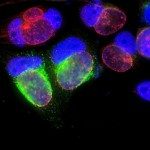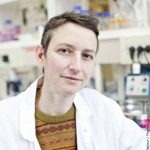Présentation
The idea that Chlamydiae have been important in the evolutionary history of Archaeplastida (Plants) was first hinted at by the discovery that a surprisingly large number of genes in the Chlamydia genomes have closely-related genes in plants. A collaborative work led by Steven Ball (CNRS, Lille, France) came to the idea that the crucial step in the emergence of Plants, i.e. the endosymbiosis of the primitive cyanobacteria (which later evolved in the chloroplasts in Green Plants for example), had been facilitated by the concomitant presence ofChlamydia in the host cell. We have brought experimental support to this hypothesis by demonstrating that the enzymes for the assembly and disassembly of glycogen in extant Chlamydia infecting amoebae carry secretion signals, suggesting that the bacteria take control of the glycogen metabolism of the host cytosol. In the “ménage à trois” implicating a primitive eukaryotic cell, a cyanobacterium and a Chlamydia, the secreted chlamydial enzyme could have brought the ability to use ADP-glucose produced by the cyanobacteria, thereby favoring the maintenance of the endosymbiont in the host (Ball et al Plant Cell 2013, Subtil et al TiPS2014).


